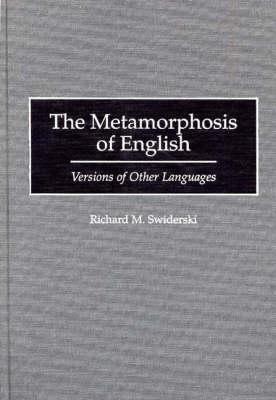Overview
Beginning with the motley crew of invaders who mingled with the Gaelic, Norse, Latin, and French speakers to produce a small nation of empire-builders who would carry their language to the far corners of the globe, the story of the birth and migration of the English language is well known to us through the popular works of Robert McNeil, Robert McCrum, and Bill Bryson. Swiderski expands and extends our understanding of the predatory aspects of the language as he shows how English acquires and is transformed by the myriad other languages with which it comes into contact. Swiderski's examples begin with major world languages, especially Spanish and Chinese, and then go on to look at the less considered connections with remote and extinct languages. Through Swiderski's lens, English takes on the look of an agglutinative museum of linguistic artifacts in danger of having no describable identity or common fabric. Each speaker's variety of English is as individual as his or her genetic makeup; it is both so universal and so dissimilar that English as we know it may be endangered as a separate language.
Full Product Details
Author: Richard M. Swiderski
Publisher: Bloomsbury Publishing Plc
Imprint: Praeger Publishers Inc
Dimensions:
Width: 15.60cm
, Height: 0.80cm
, Length: 23.40cm
Weight: 0.237kg
ISBN: 9780897894685
ISBN 10: 0897894685
Pages: 160
Publication Date: 23 May 1996
Recommended Age: From 7 to 17 years
Audience:
College/higher education
,
Professional and scholarly
,
Undergraduate
,
Postgraduate, Research & Scholarly
Format: Hardback
Publisher's Status: Out of Print
Availability: Out of print, replaced by POD

We will order this item for you from a manufatured on demand supplier.
Reviews
?Swiderski's book is very interesting for students who know basic linguistics....he almost artistically touches down here and there to make the known classical lingustic aspects glitter in new hues. I found it extremely interesting to read this book; it is written in a simple and ""light"" English, and it gave me many good examples for my lectures on English and general lingustics. Thus I have no hesitation in recommending this book, including to students.?-WORD ""Swiderski's book is very interesting for students who know basic linguistics....he almost artistically touches down here and there to make the known classical lingustic aspects glitter in new hues. I found it extremely interesting to read this book; it is written in a simple and ""light"" English, and it gave me many good examples for my lectures on English and general lingustics. Thus I have no hesitation in recommending this book, including to students.""-WORD
?Swiderski's book is very interesting for students who know basic linguistics....he almost artistically touches down here and there to make the known classical lingustic aspects glitter in new hues. I found it extremely interesting to read this book; it is written in a simple and light English, and it gave me many good examples for my lectures on English and general lingustics. Thus I have no hesitation in recommending this book, including to students.?-WORD
Author Information
RICHARD M. SWIDERSKI is Education Coordinator at Canal Community Alliance in San Rafael, California. Formerly Professor of Anthropology at Moi University in Kenya, he is the author of seven books, including Voices: An Anthropologist's Dialogue (1986), Teaching Language, Learning Culture (Bergin & Garvey, 1993), and Eldoret: An African Ethnography (1995).




